E. & H.T. Anthony & Co.
Novelette View Variation 2.0 (Solid Bed)
4x5
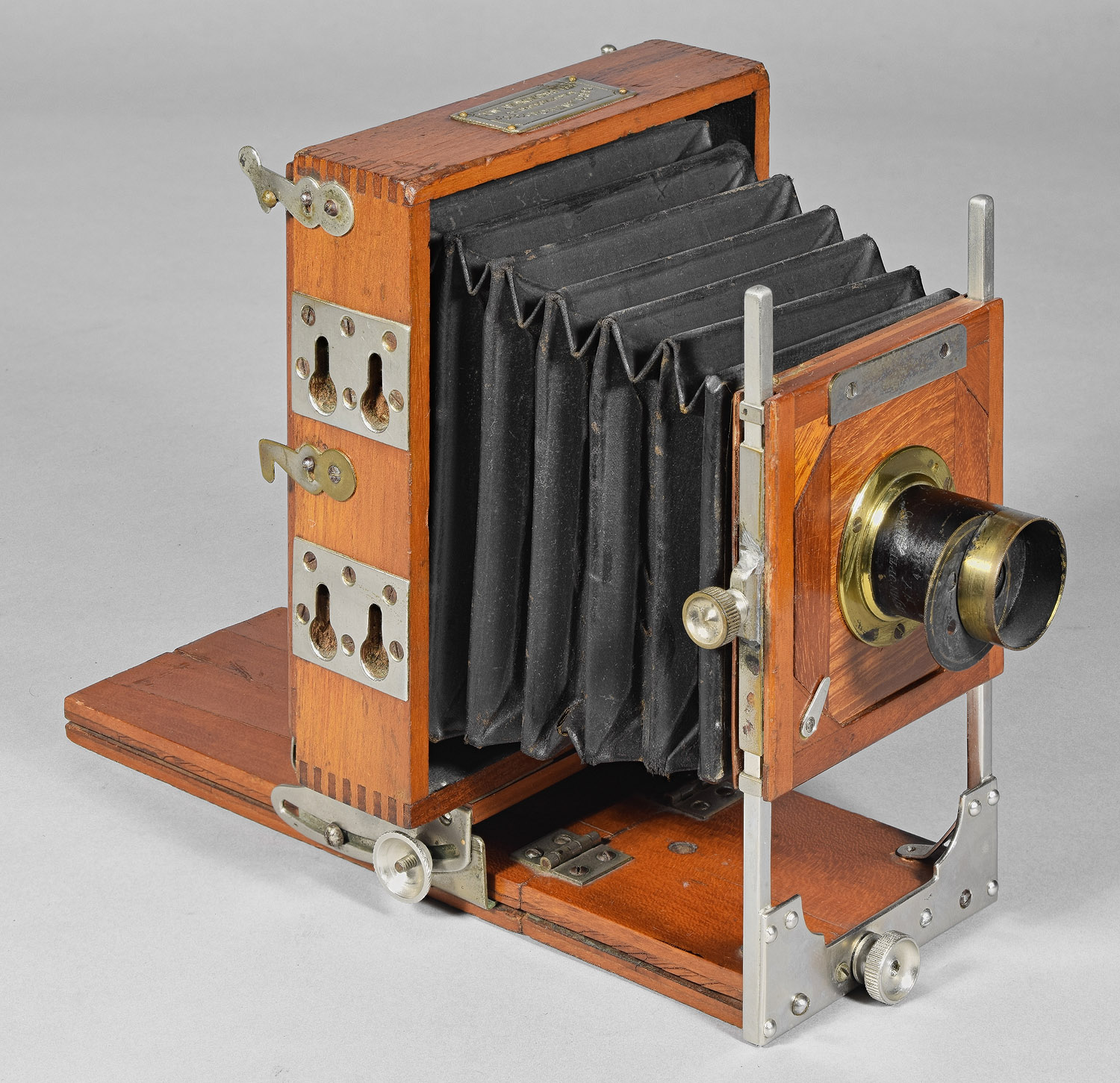
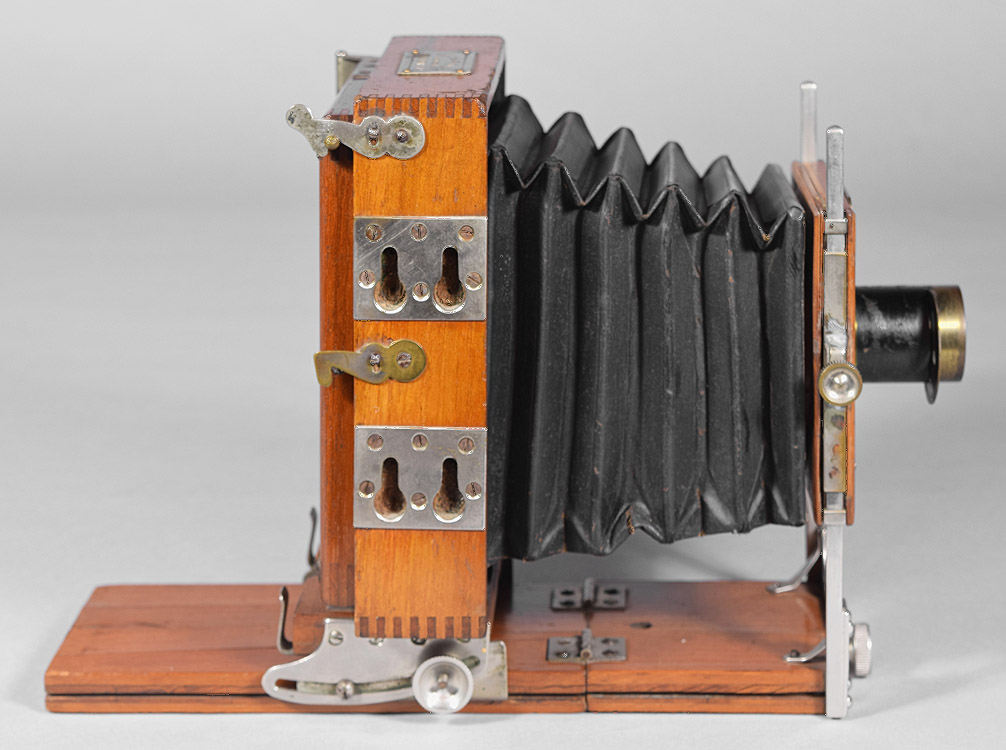
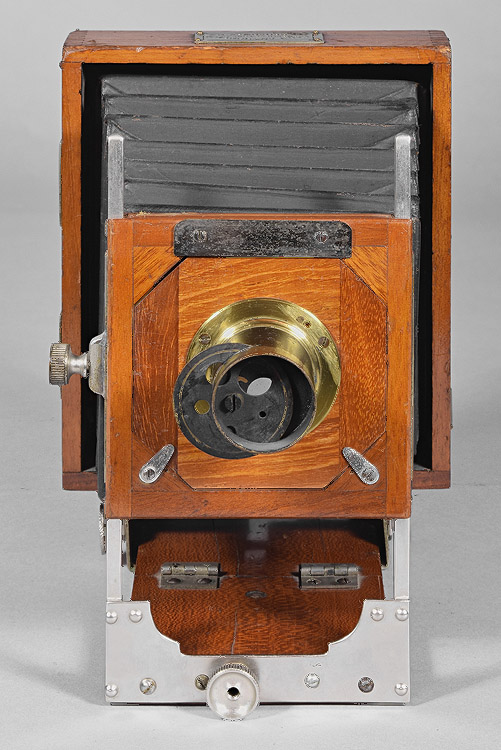
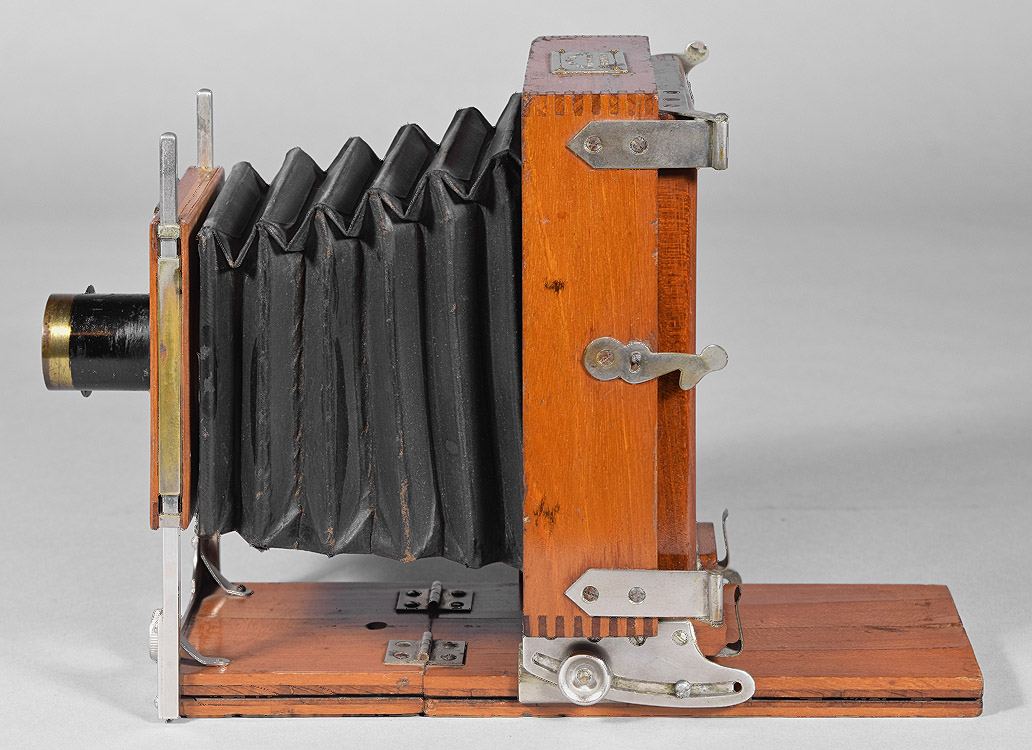
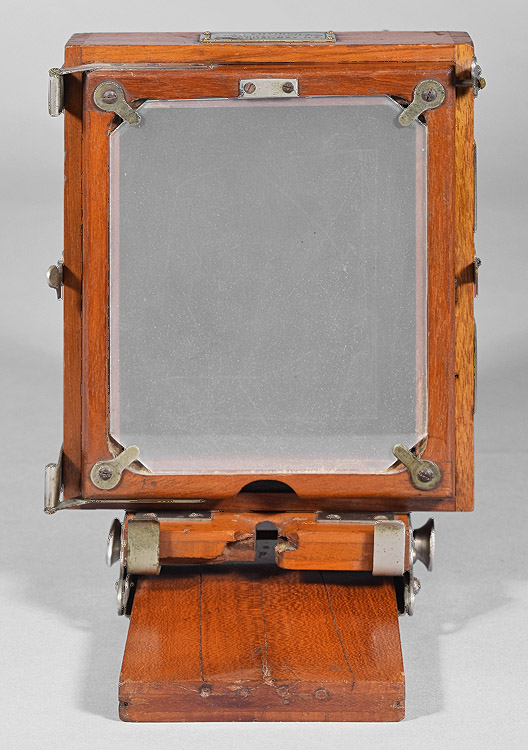
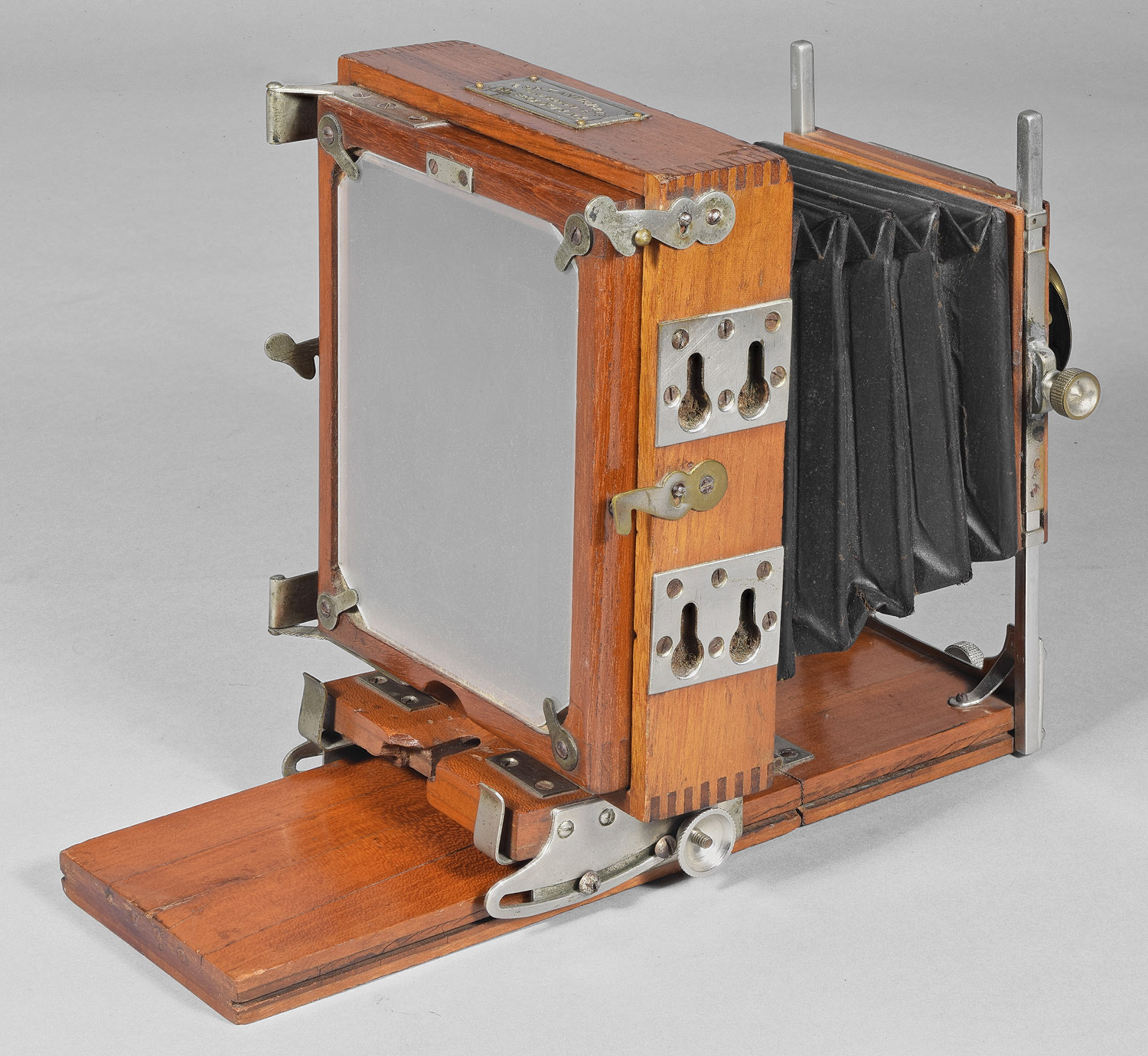
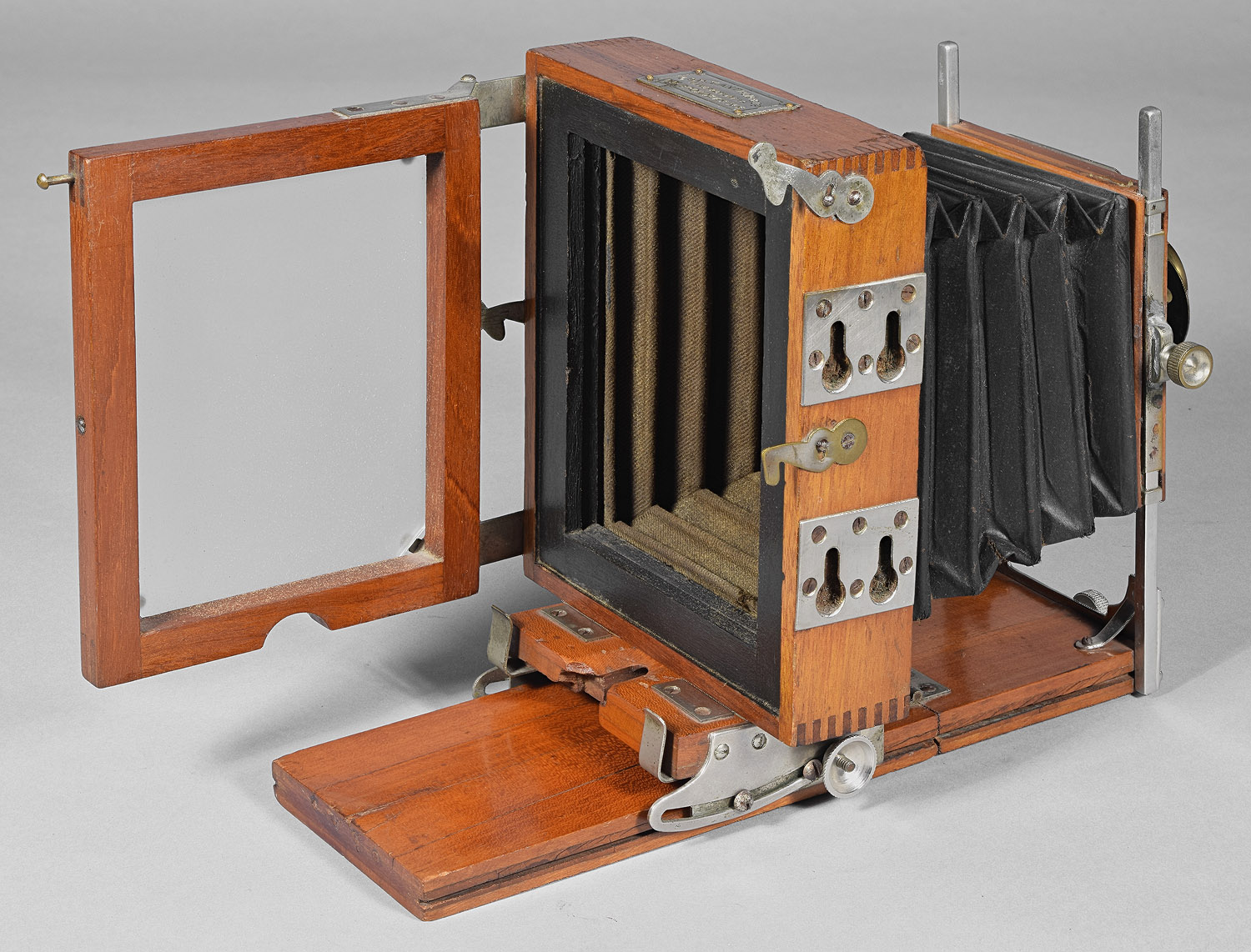
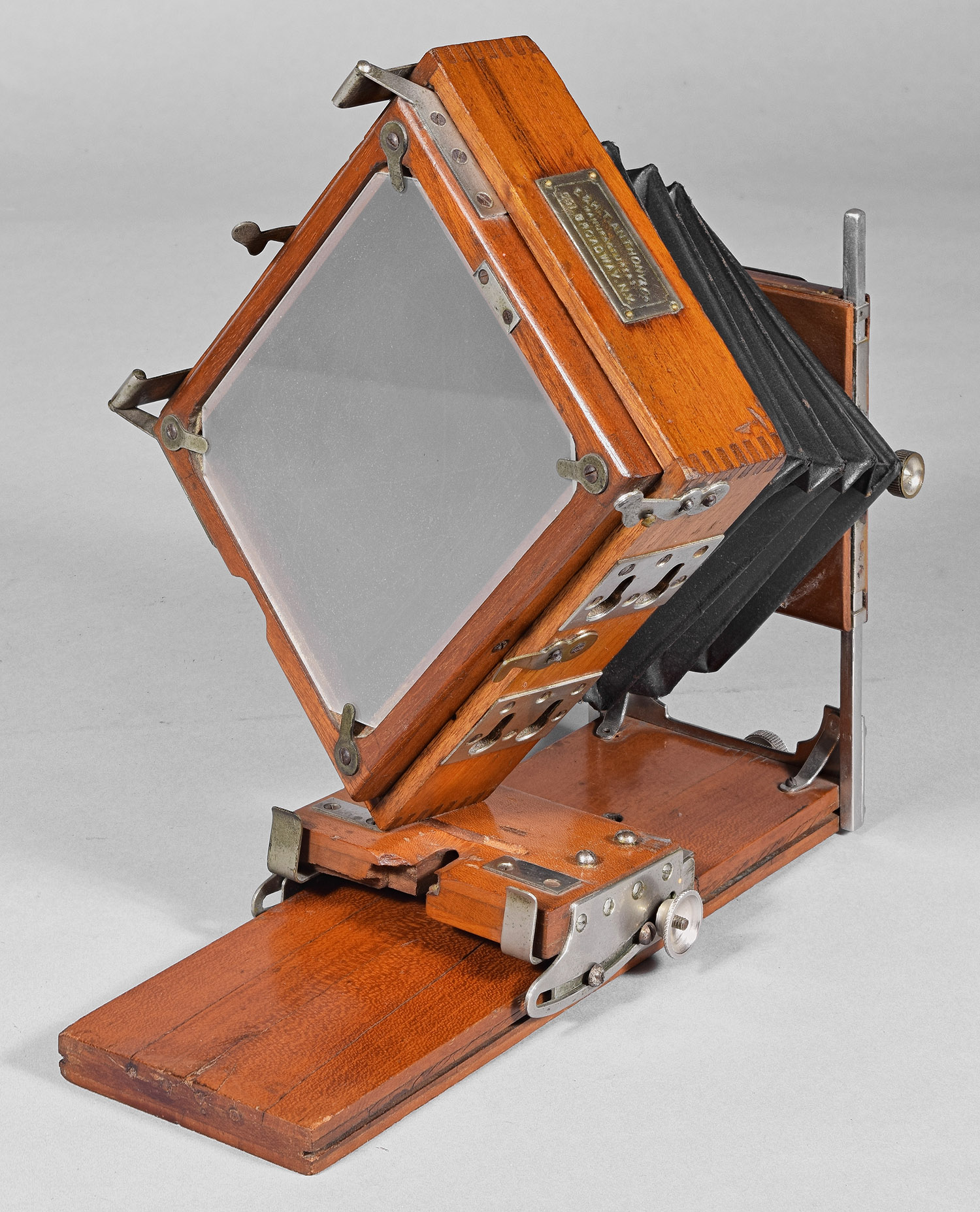
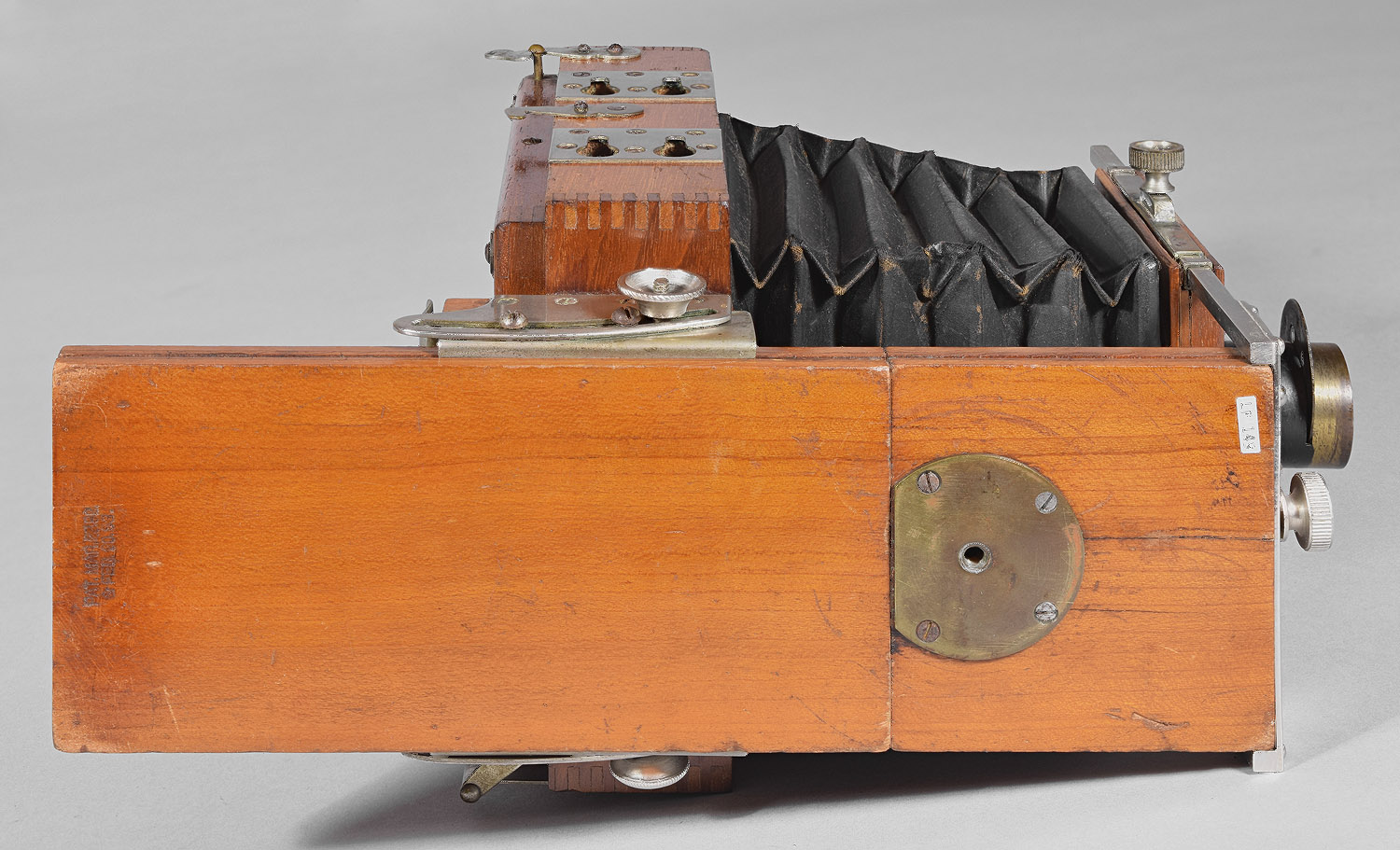
Label, Top of Rear
Standard. It appears that, in the numerical address, at least the
middle number has been altered to "9", and possibly the first number has
also been altered. The firm of E. Anthony was at 501 Broadway from
1860 to 1869, when E. & H.T. Anthony moved to 591 Broadway. Since
this camera clearly post-dates the revolving bellows patent of Mar. 28,
1882 (No. US255,567), one can only say "what the
heck?
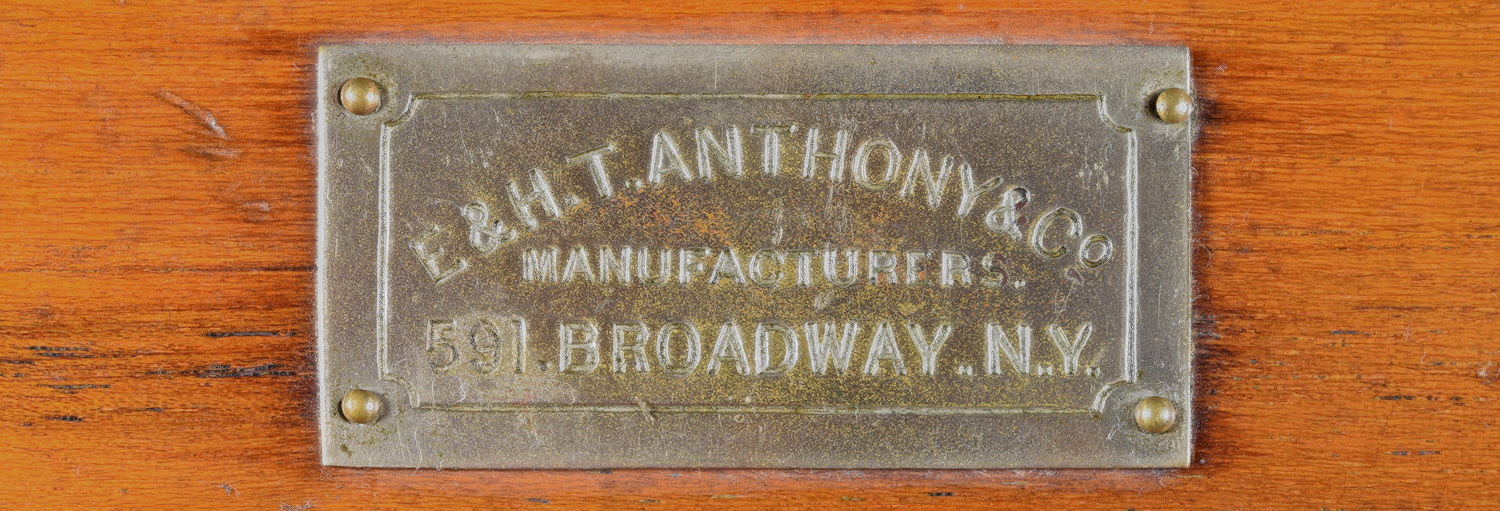
Date Introduced: - ;
Years Manufactured: c. 1885
Construction: rear
focus via push-pull; single swing; reversing
by rotating bellows and back; 3- piece lens board
Materials: mahogany body; cherry plywood
base; black fabric bellows; nickeled hardware
Sizes Offered: 4x5
Notes:
This camera is pictured in Anthony, the Man, the Company, the Cameras by William Marder, p. 247, where it is called an "early solid bed"; Christie's 1989 sale of Marder's collection.
Anthony Novel models and Novelette models share the characteristic that they all have bellows that rotate along with the rear standard, except for Novel Variation 1.0. Novels are generally more robust (read: heavier) than Novelettes, For example, Novels have a ground glass frame that is about 1 inch wide, whereas Novelettes have a ground glass frame that is only about 1/2 inch wide.
There are three main variations of Novelette and two sub-variations of Variation 1. Their basic focusing, tilt, and rise mechanisms are also the same throughout. Their differences are in the platform design, and, in the case of the sub-variations, whether they have a round or square front.
Novelette Variation 0.5: has a frame-type platform constructed of solid cherry. The rigidity of the base is supplied by shifting a large brass plate backwards until it lodges half on the main part of the platform and half on the rear platform extension. This type of mechanism seems to be confined to the smallest examples of Novelettes, e.g., 4x5. It is too bad this mechanism wasn't used for larger cameras, as it generally supplies a tight fit and flat platform, even after 120 years, a claim that cannot be made for Anthony's patent hooks used in the other variations.
Novelette Variation 1.0 Round Front: Variation 1 has a frame-type platform construction, and differs from Variation 0.5 only in that the platform is made rigid by use of Anthony's patent platform hooks, one on each side of said platform. They have the advantage over, say, a thumbscrew, by being very quick. They have the disadvantage of tending to loosen over time, which, given the inevitable pull from the bellows, makes the rear platform extension have a slight angle to the main platform. This really doesn't affect the process of taking a photo through the camera, but it does present a problem to someone like me documenting what the camera looks like while trying to make various planes of the camera end up parallel in said photo. The difference between the Round Front Variation and the Square Front Variation is the shape and size of the front standard.
Novelette Variation 1.0 Square Front: The difference between the Round Front Variation and the Square Front Variation is the shape and size of the front standard. The Square Front Variation has about the smallest (and yes, square) front standard that can accommodate a single lens. The bellows tapers down sharply from the rear standard to this small front standard. In contrast, the Round Front Variation is designed to stereo work, and has a lens board wide enough to accommodate stereo lenses. The bellows necessarily does not taper as much as in the Square Front Variation, and also needs more wood in the front standard to allow for the rotating of the bellows. This extra wood comprises the round parts (top and bottom) of the front standard.
Novelette Variation 2.0: has a
solid plywood base
instead of the frame-type base of the other variations.
Variation 2.0
was described by Christie's
auction house (where it was auctioned) as a "Bicycle Novelette",
and referred to by William Marder in his Anthony book (where it was
illustrated) as "early". The
Anthony Bicycle Equipment
(a 3¼x4¼" view camera) actually more resembles the Novelette Variation 0.5
in that both have the shifting brass plate as a way to make the folding
platform rigid and metal tubes to support the front standard.
However, the Bicycle Equipment does not have a revolving bellows, the
claim to fame for all Novels and Novelettes, and therefore cannot be a
Novelette. I suspect that either 1) Bill Marder was correct, and
this variation is a early one, or 2) Variation 0.5 and Variation 2.0 are
merely alternate ways to construct a small format camera such as a
3¼x4¼" or 4x5".
The
tripod screw
of the Novelette
is neatly stored by screwing it into the
bottom of the front standard.
References:
